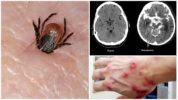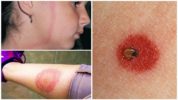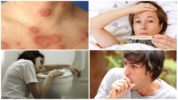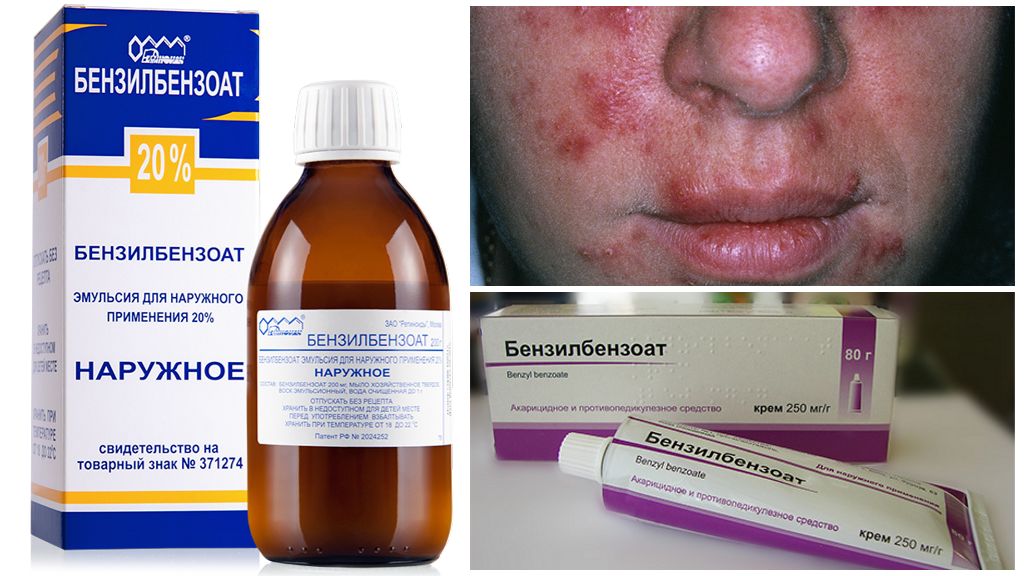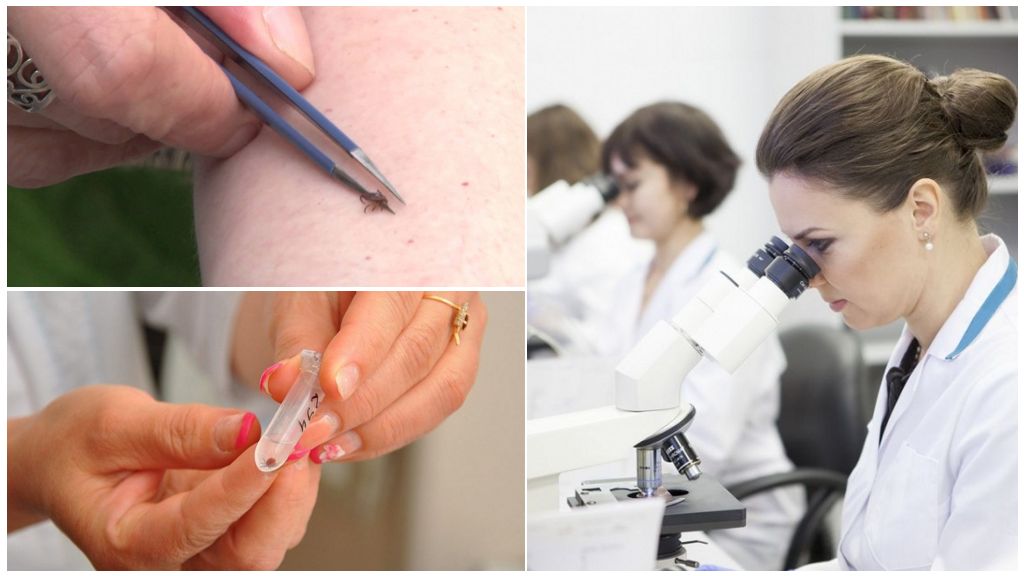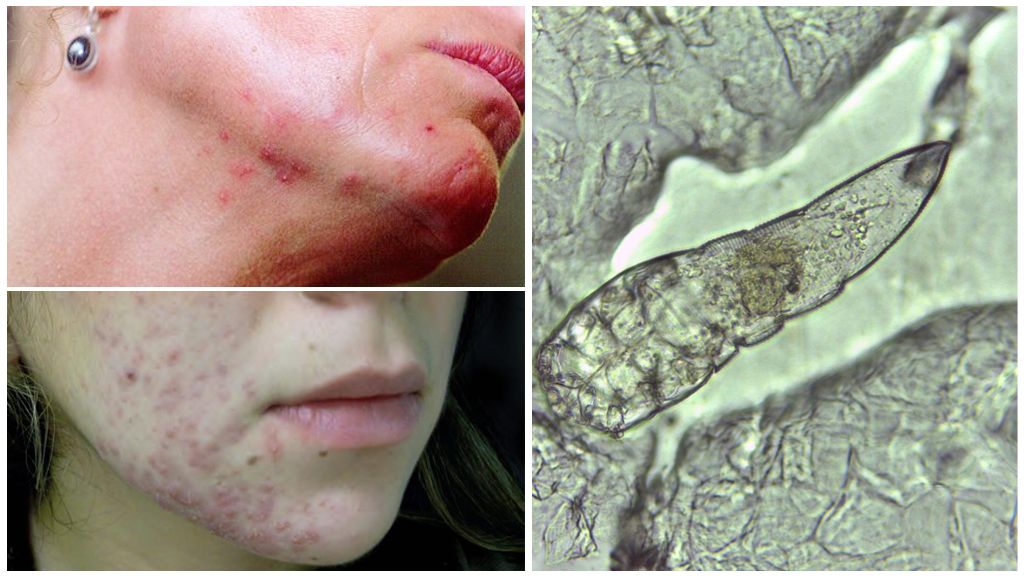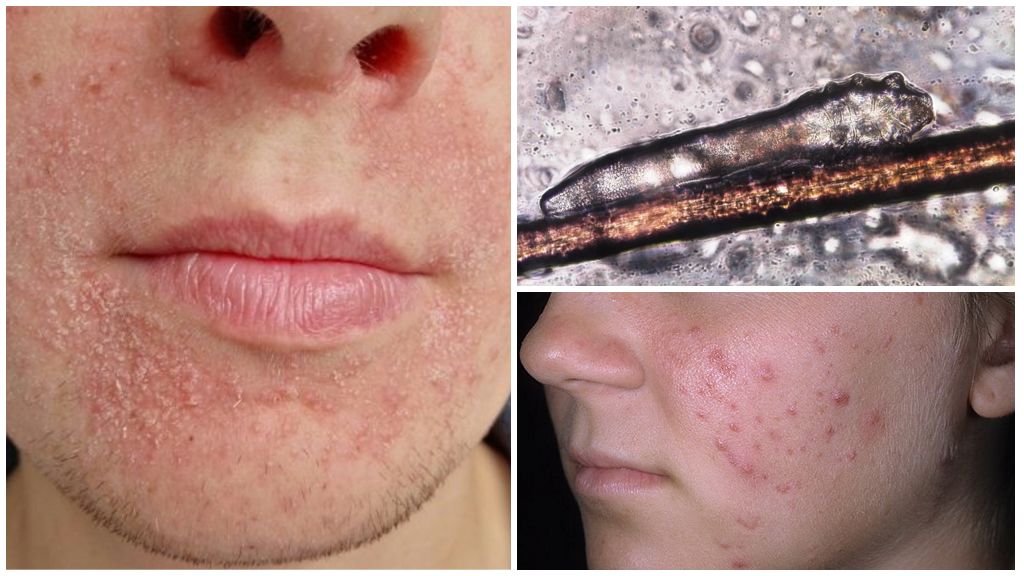- Lyme Disease
- Signs of tick-borne encephalitis
- Symptoms of Borreliosis
Tick-borne encephalitis and borreliosis are the most dangerous diseases transmitted ticks. Every year in Russia 9 thousand cases of infection are recorded. The infection is spread by the European forest, taiga tick. It is impossible to determine an externally infected arachnid, laboratory examination is required.
Tick-borne encephalitis and Lyme disease - general concepts
Parasites feed on the blood of animals, birds, people, are carriers of diseases viral, bacterial origin, spread helminth eggs. The most dangerous diseases are encephalitisborreliosis either Lyme disease. The first symptoms are similar, in the subsequent pathology affects different systems, organs.
Tick-borne encephalitis
Natural focal viral infection. It is characterized by fever, intoxication, damage to the gray matter (encephalitis) or the membranes of the brain, spinal cord (meningitis, meningoencephalitis). It can lead to persistent neurological disorders, dementia, psychological complications, paralysis, disability, death.
On a note!
Infection carriers are 6 species ixodid ticks, in Russia lives 2 - european forest, taiga. Bulk activity observed in wet, warm weather. The risk of infection exists from March to October. About 6% of victims may become infected by an infected tick.
The virus in most cases is transmitted through bites, less often - when raw milk is consumed by goats and cows. Initially localized in the blood, affects the lymphatic system. Then it spreads throughout the body, the first symptoms appear. After 7 days, the condition normalizes, but the infection continues to progress, the virus penetrates the liver, spleen, spinal cord, and brain.
Lyme Disease
Other names - Lim disease, borreliosis, burulosis. Infectious disease with a wide variety of clinical manifestations. The causative agents are 5 types of bacteria - sporechet type borrelia. Transmitted to humans when bitten by infected ixodid ticks, are in saliva.
The early manifestations of borreliosis resemble the influenza virus, are characterized by fever, intoxication, skin rash. Untimely, incorrect therapy leads to complications, a chronic course, ends with disability, death.
The causative agent enters the human body with tick saliva. At the site of the bite, inflammation, swelling, erythema migrans appear. Bacteria from the blood enter the lymph nodes, internal organs, and are localized in the heart, lungs, liver, and brain. The appearance of the first symptoms begins after the death of the first Borrelia. In the process, endotoxin is released, which provokes a number of immunological pathologies. The severe stage of the disease ends in damage to the joints - arthritis.
On a note!
If we compare what is more dangerous - tick-borne encephalitis or borreliosis, with a small difference in degree of danger exceeds the first disease.Tick-borne encephalitis is treated with antiviral agents, the result of recovery depends on the strength of the immune system, while antibiotics are used to treat Lyme disease, which act much faster.
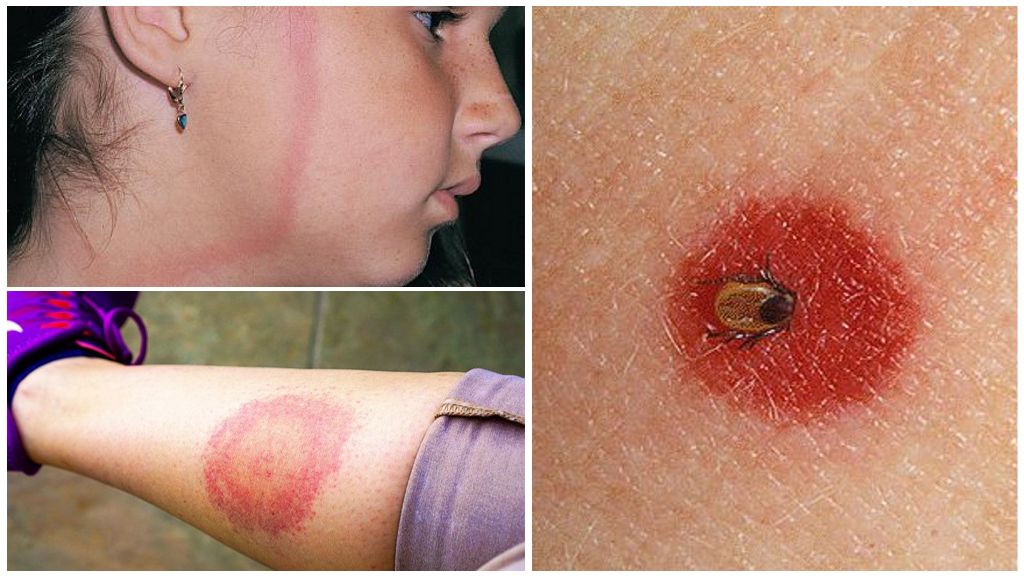
Symptoms of tick-borne encephalitis and tick-borne borreliosis
The incubation period in both cases lasts an average of 14 days after tick bite. Sometimes the first manifestations occur after 20-60 days. Depends on the strength of the immune system.
Signs of tick-borne encephalitis
Initial symptoms resemble flu:
- fever;
- anorexia;
- malaise;
- weakness;
- headache;
- nausea;
- vomiting
- muscle pain, aches;
- high body temperature - up to 40 degrees Celsius.
The treatment is symptomatic. After 8 days, the condition normalizes, but in 30% of cases the disease continues to progress, affects the internal organs, systems, the 2nd phase begins. The virus invades the central nervous system, brain, spinal cord. The following manifestations are characterized:
- migraine
- severe pain, stiff neck muscles;
- sensitivity disorder;
- impaired consciousness;
- paralysis.
In the absence of qualified treatment, dementia, disability, death occurs.
On a note!
Symptoms in adults may not have a vivid clinical picture. The asymptomatic course of the disease ends either in full recovery, antibody production, or a chronic form. In children, signs of tick-borne encephalitis are always pronounced.
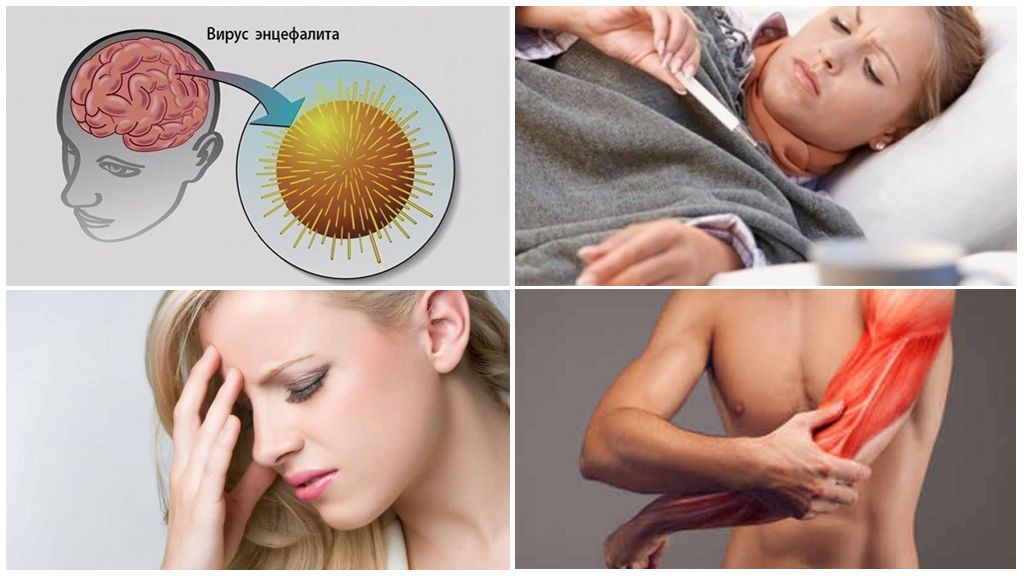
Symptoms of Borreliosis
Specialists distinguish 2 periods of the disease - early (stage I, II), late (stage III). The first manifestations of borreliosis are acute or subacute:
- a sharp increase in body temperature to 40 degrees Celsius;
- chills;
- fever;
- nausea;
- vomiting
- muscle pain;
- fatigue
- stiff neck muscles;
- dry cough;
- runny nose;
- sore throat;
- photophobia;
- Pain in the eyes;
- migraine.
On a note!
In 80% of patients, eczema appears at the site of tick suction. Sometimes victims seek help from an allergist, dermatologist. After a few days, overall health worsens. The diameter of erythema is from 10 to 60 cm. Inside, accumulation of pus, compaction can be observed. In addition, a skin rash, conjunctivitis appears.
Often, patients manifest myalgia, neuralgia, pain in the liver. The first stage of borrellis lasts 3-30 days. With adequate antibiotic therapy there is a complete recovery, in its absence - the transition of the disease to the following stages with damage to internal organs, systems.
The following manifestations of the disease make themselves felt 1-3 months after the first exacerbation, are characterized by neurological, cardiac disorders.
- severe, throbbing headache;
- stiff neck muscles;
- weakness;
- visual fatigue;
- sleep disturbance;
- unstable psycho-emotional state;
- impaired memory, concentration of attention, mental activity;
- damage to the facial nerve;
- lacrimation
- hearing loss.
In the second stage, the cardiovascular system is also affected, but it has no characteristic features.
The last phase of borreliosis occurs in 10% of patients, appears after 6 months or within 2 years. Typical symptoms are joint damage, the development of arthritis, atopic dermatitis, neurological symptoms, cramps. In a chronic course, bones, cartilage are destroyed, osteoporosis, paralysis, disability, death develop.
On a note!
The difference between encephalitis and borreliosis at the initial stage is insignificant. With Lyme disease, eczema and skin rashes are disturbing. With tick-borne encephalitis, the symptoms resemble ordinary flu.
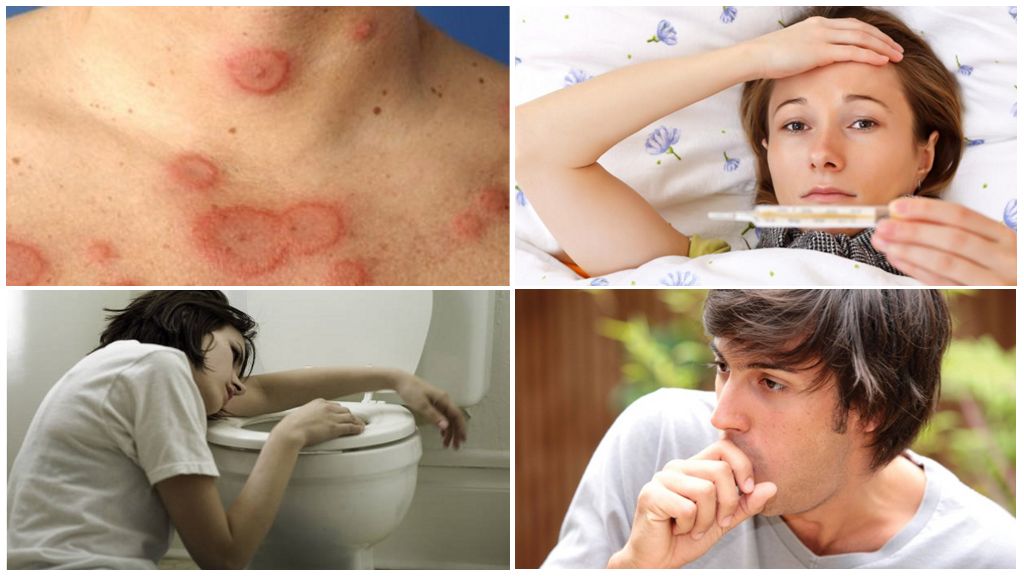
Diagnosis and treatment of encephalitis and borreliosis
The disease can be detected 14 days after being bitten by an infected tick. Laboratory diagnosis of arachnids carried out immediately after removing it from the skin. Use a living, dead tick or pieces of its body.
For detect encephalitis from an infectious tick, the serological, molecular biological, virological method is used. Determine the presence of antibodies in the blood, the reaction of the immune system. Differential diagnosis is carried out taking into account clinical manifestations, patient complaints.
Diagnosis of Borreliosis carried out similarly. The only difference is that, in addition, cerebrospinal, synovial fluid is taken for analysis. Examine the blood for the presence of antibodies to bacteria, the response of the immune system.
There are no special treatment methods for tick-borne encephalitis. For emergency prevention administered immunoglobulinderived from blood donors. The main goal is to strengthen immunity so that the body can cope with the disease. In the presence of the first symptoms of viral encephalitis after a tick bite, the patient is hospitalized. Therapy is carried out with antiviral drugs, corticosteroids. As prevention use the vaccine.
On a note!
Persistent neurological, psychiatric Encephalitis Complications develop in 10-20% of patients. Mortality is 1-2% for the European subtype, 20-25% for the Far East. Death occurs within 5-7 days after the occurrence of neurological manifestations.
The treatment of tick-borne borreliosis is carried out with antibiotics of the penicillin group, Tetracycline, Doxycycline, Amoxicillin, etc. The duration of therapy, the dosage is determined by the doctor. With adequate therapy, recovery occurs in 2 weeks. Treatment in the last stages of borreliosis is complicated by a large number of clinical manifestations. Medicines are selected individually in each case.
A favorable outcome depends on the timely initiation of qualified treatment, as well as on the strength of the immune system. Sometimes the disease stops at the first stage, a full recovery occurs. At the last stages of borreliosis, the forecasts are worse - paralysis, disability, death. No vaccine, prevention is to use repellentswearing clothes with puffs, cuffs.
